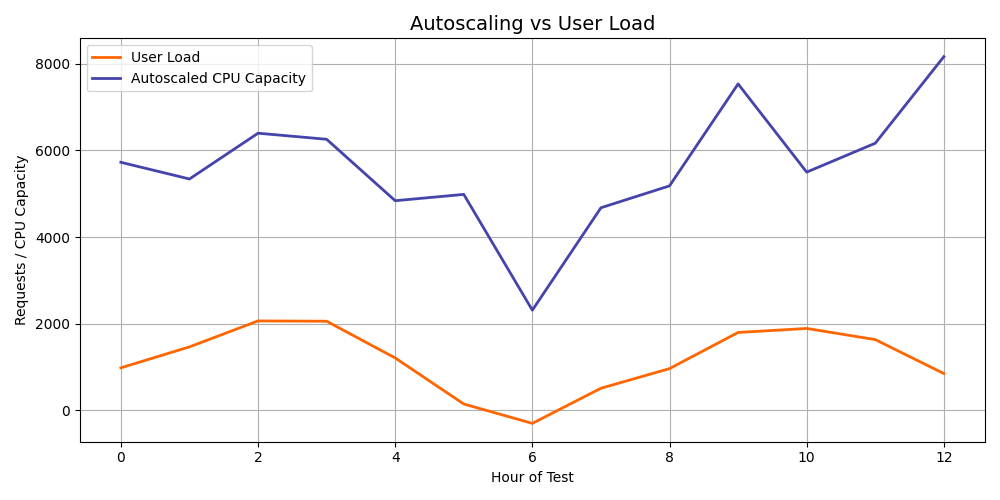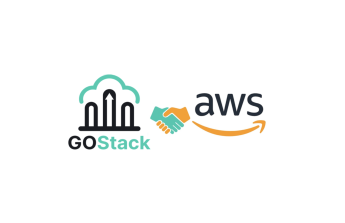At GOStack, we believe in looking beyond surface metrics when testing software performance. In the iGaming industry – where milliseconds can define user experience and uptime is directly tied to revenue – performance isn’t a checkbox. It’s a commitment.
What a 12-Hour Load Test Taught Us
Recently, we conducted a 12 hour endurance test on a critical system powering an iGaming platform. What started as a seemingly clean bill of health evolved into a deep dive into the hidden cracks of a distributed architecture under real pressure.
The Setup
We emulated realistic user behavior by simulating up to 15,000 concurrent users engaging with sports betting, live casino, and jackpot modules. For the first few hours, everything looked flawless:
- Hour 1-3: Flawless response times (<500ms)
- CPU and memory metrics comfortably within green zones
- Autoscaling performed as expected
But as we crossed the 4 hour mark, the real system dynamics began to show.
The Cracks Emerge
Database Connections Snowballed
The Surprise: Database connection pools began to fill slowly and consistently. By hour 6, new connections were starved.
Root Cause: A connection leak in an authentication sidecar, originally written 3 years ago.
Impact: Player login latency rose to 4 seconds. Session creation failed intermittently. VIP traffic was redirected to backup systems.

Memory Leaks in a “Forgotten” Sidecar
The Surprise: A legacy container responsible for fraud telemetry consumed an additional 2% RAM every hour. By hour 10, node OOM kills began.
It had never crashed in staging, but staging never runs for 12 hours straight.
Autoscaling Didn’t Save Us
The Surprise: Kubernetes horizontal pod autoscaler worked – until it hit the cloud provider’s CPU burst ceiling. Pod startup lag ballooned to 10 minutes.
Lesson: In the cloud, you’re only as scalable as your provider allows. Capacity != elasticity.

Business Logic Became the Bottleneck
The Shock: A promotional eligibility service for sportsbook bonuses had a linear scan across 100,000+ user records. Response times spiked by 400% during simultaneous traffic bursts from multiple countries.
Discovery: Not a bug – just badly written business logic that worked fine in unit tests but collapsed under concurrent traffic.
Why Duration Matters
Short load tests (1-2 hours) can catch basic misconfigurations or logic flaws. But:
- They won’t reveal memory leaks.
- They mask cloud throttling limits.
- They hide stateful service degradation.
- They miss scheduling contention across distributed clusters.
Performance issues are like icebergs – 90% remain hidden until you sail deep into the night.
Our Approach at GOStack
We don’t believe in running “happy path” tests. Our playbook includes:
- Chaos Engineering: Killing pods mid-test, injecting latency into services, disabling zones.
- Business-Layer Profiling: Tracing individual bets, promotions, withdrawals under heavy load.
- Real User Load Patterns: Using traffic models from real game launches and sports events.
Lessons from iGaming
The iGaming sector is uniquely sensitive to performance fluctuations. Whether it’s handling last minute FIFA bets or jackpot triggered win broadcasts, systems must not just survive – but perform consistently under pressure.
- Latency sensitive flows: Bet placement, spin start, and live-stream syncing.
- High concurrency pressure: Tournament starts and bonus drops.
- Third party fragility: Payment gateways, fraud engines, and data feeds.
Technology Stack Used
For this particular load testing engagement, our environment included:
- Cloud Infrastructure: AWS EC2, S3, EKS
- Microservices: SpringBoot (Java-based)
- Data Stores: MySQL and Redis
- Load Generation: Grafana k6
- Monitoring & Observability: Grafana with Prometheus
This combination reflects a common architectural choice in the iGaming domain, balancing scalability with performance under unpredictable traffic patterns.
The Final Word
If your performance tests last less than 4 hours, you’re watching a highlight reel – not the full movie. Systems fail in waves, not avalanches.
82% of all post-launch outages we’ve investigated began with the words: “But it passed load testing.”
Want to know what your system looks like at hour 9?
Let’s build unbreakable iGaming platforms together.
PS. It’s not just for iGaming – this applies to any industry where performance matters.




